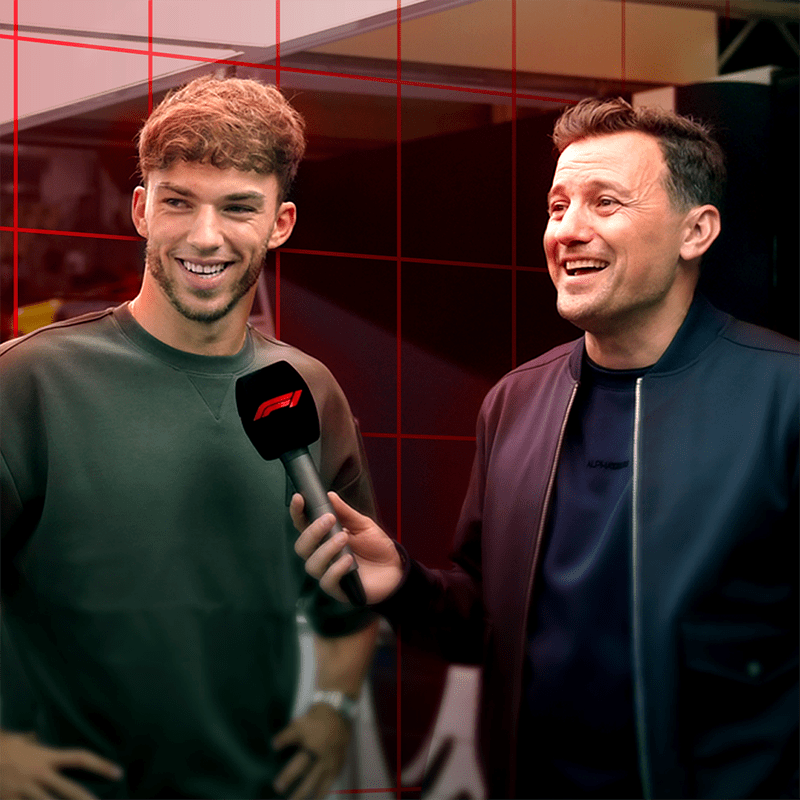Technical F1 Unlocked
TECH TUESDAY: How Ferrari tried to tame their SF-23 with new floor upgrades in Miami

Ferrari turned up in Miami with a new floor and a full commitment to the single pylon rear wing they had trailed at earlier races. The floor is part of an upgrade which will come to full fruition at Imola with revised upper bodywork.
Ferrari chose to bring the floor part of the package to confirm that it did what it was designed to do, which was, to quote the team’s senior performance engineer, Jock Clear, “To make the car more benign and predictable in the medium and high-speed corners.”
READ MORE: 5 Winners and 5 Losers from the Miami Grand Prix – Who was on fire in Florida?
This development was triggered by the feedback of Charles Leclerc and Carlos Sainz from the first two races that the car was too peaky in the way it delivered its downforce, making it unpredictable in the faster corners.
With the current generation of venturi-tunnelled ground effect cars, it is possible to redistribute the underfloor pressures to improve the consistency of the aerodynamics.

There are three basic elements in this tuning process:
- The floor fences which form the inlet of the tunnels.
- The shaped floor edges which in creating vortices help aerodynamically seal the underfloor, thereby maximising the pressure difference between the air over the body and that underneath.
- The shape of the ‘canoe’ – the flat section of floor between the two tunnels, the edges of which define the width of the tunnels along their length. It’s been nicknamed canoe because of its general canoe-like slim teardrop shape in plan view. Though as they are being developed they are tending to move away from that shape.
This tweet has been removed from Twitter
FACTS AND STATS: Verstappen on a roll in the States, as he ties the Red Bull wins record
There is only so much airflow mass which can be split between the tunnels and out-washed around the outer bodywork. Those two flows then meet up again around the exit of the diffuser at the back of the car.
The inlet fences define that split as well as trying to introduce some energy into those flows with the way they accelerate the air through the fence gaps.

TECH TALK: Baku's development battle heats up | Crypto.com
Ferrari have re-aligned the fences and changed their profile, particularly that of the long-extending outboard fence which acts as a barge board. The roof of the fences has also been changed.
Floor edges
The air flowing through the tunnels is further accelerated by the shapes of the floor edges which trip the exterior airflow into vortices – fast-spinning circles of air which travel down the outer edges of the tunnel, speeding up the adjacent air flowing through there and thereby working the underfloor harder.
The faster it flows, the more downforce is created. But there is a limit to how much it can be energised with just a single floor cut-out permitted within a defined area.
Ferrari have included a more hooded forward section of floor edge and this will effect the power and direction of the vortices.

Canoe section
Because there is a limitation on the dimensions of the floor edge cut-outs, the vortices may not be as powerful as needed or directed to the desired part of the tunnel. One of the aerodynamicists’ tools to correct this is the shaping of the canoe section of floor.
By varying the width and volume of the tunnel along its length through the shaping of the canoe’s outer edges, the pressures can be manipulated in a way which allows a more harmonious relationship between the vortices and the airflow through the tunnels.
Although not so far fully visible, the evidence of Ferrari having re-shaped the ‘canoe’ can be seen inside the diffuser, where the canoe tail can be seen. That tail is now much narrower.
Playing with the shape of the canoe changes the way the airflow in the tunnels is energised. With only so much mass airflow available, it’s a question of moving it where it’s required to give a balance through a range of speeds and attitudes to give not necessarily the biggest downforce numbers, but the best spread of downforce throughout all operating parameters. This is what gives the consistency – and driver confidence.

“We can be quite specific on how to improve those areas,” says Clear of Ferrari’s changes. “Overall, we’re just trying to get more downforce and less drag, but the subtleties are very powerful these days.
“You can move the air around slightly and effectively close the balance window – give the driver a more consistent balance through low-speed, high-speed, braking and entry and exit; all those areas where the floor is moving around a lot.
F1 NATION: All the chat and analysis from the Hard Rock Stadium paddock – it’s our Miami GP review
“We put it on one car [that of Sainz] on Friday and we were quite comfortable that it was doing as expected, so both cars migrated to it in the afternoon. Both drivers are much more comfortable with the car through the medium and high-speed and maybe what happened with Charles’s accident [in qualifying] was testament to that. He was really going for it in those high-speed 4-5-6 curves.
“With the new aero package over the winter we’ve taken a while to find the set-up and we know we made some progress in Australia and big progress in Azerbaijan. This floor contributes again to getting the car in a better window.”




















